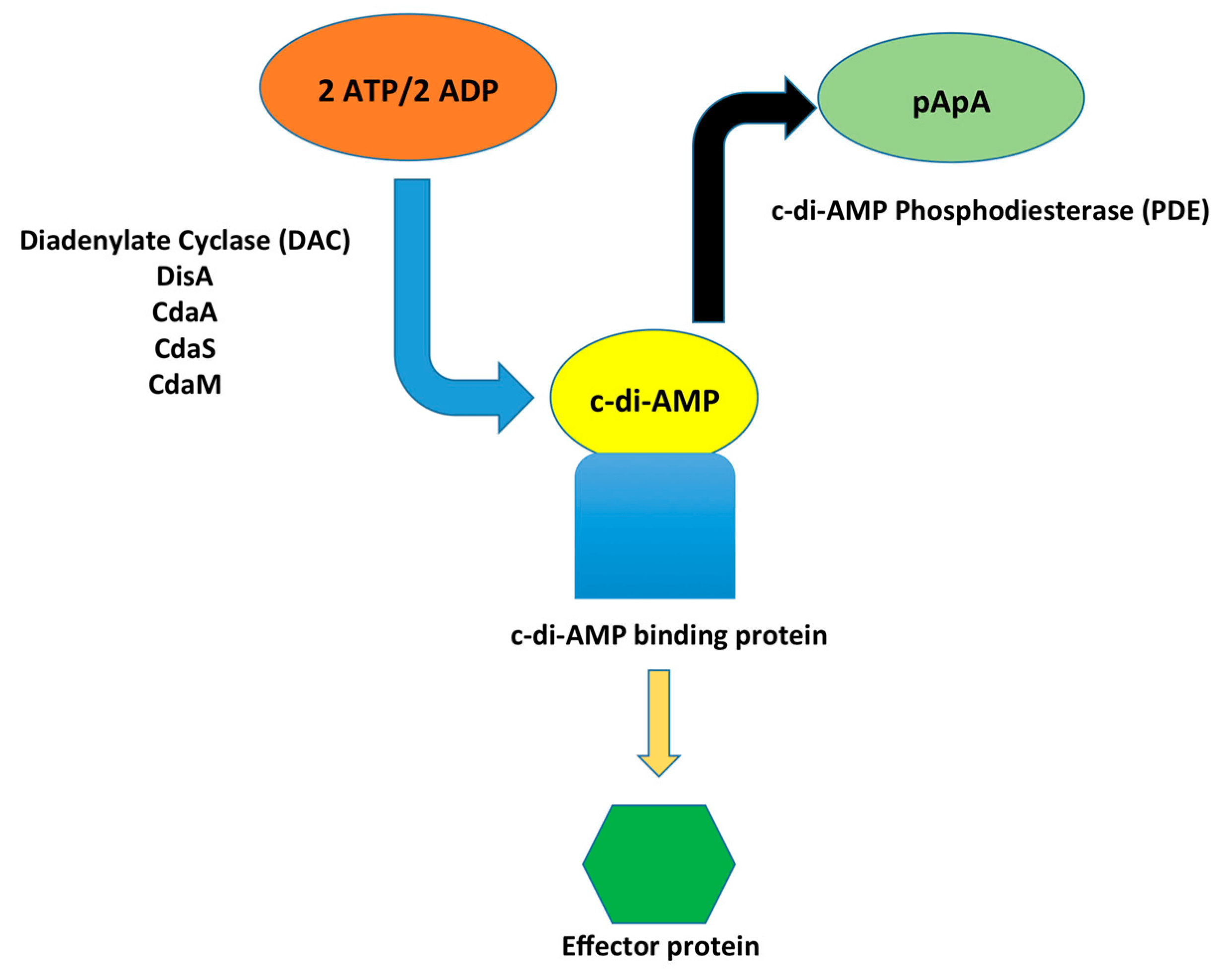Cyclic Dimeric Adenosine Monophosphate (c-di-AMP) as Vaccine Adjuvant
Bis-(3',5')-cyclic dimeric adenosine monophosphate (c-di-AMP) is a second messenger molecule in bacteria and archaea which can exert strong adjuvant activity when delivered by mucosal route. Creative Biolabs is a leader in the field of vaccine development and the extensive experience and expertise of our scientists enable us to provide development services related to innate immune stimulators, particularly the adjuvant development of c-di-AMP.
Cyclic Di-nucleotide bis-(3',5')-cyclic Dimeric Adenosine Monophosphate (c-di-AMP)
3' 5'-cyclic di-adenosine monophosphate (c-di-AMP), a bacterial second messenger, is essential to the regulation of a variety of physiological functions, such as potassium uptake, cell turgor, and cell wall homeostasis. In mammals, c-di-AMP is an agonist of the stimulator of the STING response, which acts as an innate immune sensor for microorganisms, resulting in type I interferon production. In addition, c-di-AMP has potent mucosal adjuvant activity that promotes humoral and cellular immune responses and has emerged as promising vaccine adjuvants over the past decade. Some studies have shown that mucosal immunization with c-di-AMP can promote strong Th1 bias, which is a necessary condition for controlling intracellular pathogens. It has recently been described that type I IFN plays key roles in c-di-AMP-mediated cross-presentation, independent of cathepsin and TAP and proteasome-dependent cytosolic antigen processing pathways, suggesting that type I IFN signaling is essential for cyclic di nucleotides-mediated cross-presentation.
 Fig. 1 Synthesis and degradation of c-di-AMP. 1
Fig. 1 Synthesis and degradation of c-di-AMP. 1
c-di-AMP as Mucosal Adjuvant
As a candidate mucosal adjuvant, c-di-AMP has been shown to be effective in preclinical models. c-di-AMP promotes humoral as well as cellular immune responses to model and vaccine antigens in mice immunized via the mucosal route. It was observed that the immunomodulation of c-di-AMP contributes to the balanced TH1 / TH2 / TH17 response. Splenocytes from immunized mice that were re-stimulated in vitro with antigen in the presence of c-di-AMP showed enhanced proliferation activity. c-di-AMP induces cell surface upregulation of T cell costimulatory molecules and production of interferon-β. These reactions are characterized by in vitro experiments with mouse and human immune cells and in vivo studies in mice. Analysis of dendritic cell subsets revealed that conventional dendritic cells acted as the primary responder to c-di-AMP stimulation.
Creative Biolabs is specialized in assisting clients with every stage of the vaccine development services, including adjuvant optimization. As an innovative and truly premier drug discovery and development research partner, Creative Biolabs is committed to providing the best quality services and high level of specialized support.
Reference
- Fahmi, Tazin, Gary C. Port, and Kyu Hong Cho. "c-di-AMP: an essential molecule in the signaling pathways that regulate the viability and virulence of Gram-positive bacteria." Genes 8.8 (2017): 197. Distributed under Open Access license CC BY 4.0, without modification
All of our products can only be used for research purposes. These vaccine ingredients CANNOT be used directly on humans or animals.


